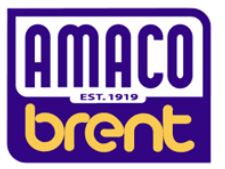AMACO Brent
 | |
| Private | |
| Industry | Ceramic Art Supply Manufacturing |
| Founded | 1919 |
| Founder | Ted O. Philpott |
| Headquarters | Indianapolis, United States |
Area served | Worldwide |
Key people |
|
| Products |
|
| Services |
|
| Website | www |
American Art Clay Company (AMACO) is an arts & crafts company that specializes in ceramic art supply manufacturing. AMACO was founded in 1919 by Ted O. Philpott with the aim to support and empower artisans. AMACO is headquartered in Indianapolis, Indiana with operations across the United States. The company is known for the formulation of ceramic decorative glazes, slurry development, metal fabrication, and clay blending.[1]
AMACO has over a century’s experience in offering unique ceramic art including Brent pottery wheels and equipment, glazes and underglazes, and a vast range of clay products. The company also works in the ceramic educational market by creating lesson plans, tutorials, videos, and participating in countless educational events.[2][3]
History
American Art Clay Company, Inc. (AMACO) was founded in 1919 by Ted O. Philpott when he brought back live animals from Africa and India to supplement the trophies mounted in his old office.
Initially, AMACO produced ceramic plaques from photographs using oil-based modeling clay. Within a year, AMACO sold over $4000 worth of modeling clay, followed by $6000 in the second year. Within three years, AMACO gained recognition, which resulted in it taking an order of over $20,000 from Woolworth's department store, based in New York.[4]
In 1921, AMACO initiated in the educational market with the release of their handbook that aimed at educating the consumer on the best use of their product.[5]
The Crayon, Watercolor and Craft Institute CWCI was established in 1936, which was changed to Art and Creative Materials Institute (ACMI) in the 1970s. The idea behind the foundation of this organization by AMACO was to instill safety leadership in the ceramics industry. The foundation of this institute was supported by AMACO, and it also collaborated with the institute to initiate the first-ever glaze labeling safety practices.[6]
In 2004, AMACO moved to Indianapolis, consisting of the main building and two exterior buildings spread across 14 acres, which was 50% more ground area than the company’s former building. During this transition, the company hired approximately 120 trailers to transport inventory, furniture, and equipment.[7]
AMACO ships products to distributors worldwide via all the major international carriers and has 23 docks with an extended staging area. The company also incorporates computerized UPS and Fed-Ex systems that provide efficient and accurate tracking of the shipments.
As of 2020, there are over 200 employees who manage the manufacturing of the company’s AMACO® and Brent® products including the AMACO/Brent Contemporary Clay Gallery and the AMACO® Historical Exhibition of Art Deco pieces.
L. Bond Sandoe Jr., husband of Valri Sandoe (daughter of Ted O. Philpott) joined AMACO in 1953, and was appointed as the company’s president in 1977. The legacy of AMACO was furthered in 2007, when Bond and Valri’s sons, Bond III and Jeff returned to work full time at the company.[8]
Bond III was appointed as the fifth president of AMACO, and Jeff as the Chief Revenue Officer in 2017. In the same year, AMACO launched the Amaco Classroom in 2017 that offers a support hub for K–12 ceramic education by providing free resources designed to help new and veteran teachers to discover fresh ways to improve the classroom experience.[9]
Innovations by AMACO
- 1934: the introduction of the first electric kilns for schools
- 1936: the first electric potter’s wheel
- 1948: a kick pottery wheel designed at the request of the VA for occupational therapy to help patients develop the muscles in their legs and feet through the kicking process
- 1950: initiated workshops for teachers
- 1951: the development of the first lead-free glaze for both the classroom and ceramic industry
- 1960: launched traveling workshops
- 1982: the first accessible potter’s wheel designed for people with disabilities
In the media
References
- ↑ Mitchell, Dawn. "Whatever happened to the zoo across from the Indianapolis Motor Speedway?". The Indianapolis Star. Retrieved 5 January 2021.
- ↑ Bassett, Mark. ""A Ceramic Enterprise for Educators: The American Art Clay Company and Its 1930s Art Pottery"". Art Pottery Shop. Retrieved 5 January 2021.
- ↑ "Amaco Brent 100 Year Article (1) (2).pdf". Google Docs. Retrieved 5 January 2021.
- ↑ "The Indianapolis News from Indianapolis, Indiana on November 3, 1988 · 61". Newspapers.com. Retrieved 5 January 2021.
- ↑ "National Potters Exhibit and Conference Comes to Indianapolis, Hosted by American Art Clay Company (AMACO/Brent)". PRWeb. Retrieved 5 January 2021.
- ↑ "Amaco Brent 100 Year Article (1) (2).pdf". Google Docs. Retrieved 5 January 2021.
- ↑ "American Art and Clay Company | AMACO Brent". www.amaco.com. Retrieved 5 January 2021.
- ↑ "amazonaws" (PDF). Retrieved 5 January 2021.
- ↑ "American Art Clay Co Inc - Company Profile and News". Bloomberg.com. Retrieved 5 January 2021.